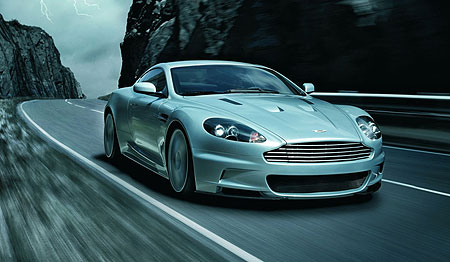Twenty-first Century films rely more fully on CGI and digital production, but even when the films blatantly address the detrimental effects on our basic needs or the dire consequences of meeting them, they still struggle with maintaining the realism expected by both Hollywood and its audiences while encouraging environmentally friendly production practices. With a budget of $200 million and a gross profit of $586 million, Quantum of Solace, a blockbuster with a blatantly environmental message against commodifying water, serves as an apt example of the dilemma filmmakers face: How can a film company provide an effective and lucrative film product and limit negative environmental externalities?
In many ways this Bond film failed to achieve the “green” message of the story in its production practices. According to Randee Daniel of Hollywood Reporter, for example, Quantum of Solace was shot in six countries, and this on-location film is, according to RPS Group “among the most expensive and carbon-intense stages of film production. Large crews and quantities of equipment must be flown abroad, and diesel generators are used to power the lighting and heating of temporary sets.” In Bregenz, Austria during the scenes of the performance of Tosca and its aftermath, 1500 extras were used, and for a later scene, the Palio di Siena at the Piazza del Campo in Siena was recreated in Italy; for a scene where Bond emerges from the Fonte Gaia, 1000 extras were hired, according to the film’s production diary on the MI6 website. Bill Dawes of FX Guide also reveals that a full-scale replica of the hotel building’s exterior was used for the exploding segment in which Bond and Camille escape in South America.
Yet efforts were made to “green” this film production, as well. Although six Aston Martins were destroyed during the making of Quantum of Solace, the film also featured environmentally friendly Ford Motor Company cars: A Ford Ka EV, which seems to be electrically powered, and a fleet of Ford Edge Fuel-Cell EVs. The film also relied heavily on CGI, with over 900 visual effects shots stirring up adventure, according to a VFX World interview recorded by Bill Desowitz. Like other James Bond films, Quantum of Solace was produced at Pinewood Studios, whose carbon footprint was recently evaluated by RPS Group to support its plan to build a “1400 unit residential development – that also doubles as a giant 15-location film set for Pinewood Studios.” The assessment report suggests that between 60% and 90% reductions of greenhouse gas emissions may be possible if the development is approved, and using “streetscapes for filming will achieve a 44% annual reduction over business-as-usual location shooting abroad.”
These changes to the studio seemed to bode well for future James Bond productions until the carbon footprint-heavy Skyfall (2012), but other action adventure films have more successfully implemented “green” production practices. With a budget of $90 million, Sherlock Holmes: A Game of Shadows (2011) for example, “exemplifies eco-friendly filmmaking,” according to Gerri Miller of the Mother Nature Network, and still has already grossed $543 million. Because the film was part of Warner Brothers’ Green Initiative, the studio brought in Greenshoot as a consultant to “assist the production in lowering the carbon footprint [of the film] and to help implement more sustainable production practices in conjunction with and to complement the Green initiatives already set out by Warner Bros.” According to Co-producer Lauren Meek, “Construction set waste and food waste were key issues for us” (quoted in Miller). As Meek explains, “We diverted 756 tons of film waste from landfill with a recovery rate of 98.6 percent which was a zero landfill achievement. We saved 2500 tons of CO2 form being emitted by using Greenshoot and adopting green practices throughout the production, and saved money through Greenshoot's services into the productions” (quoted in Miller). Some of this was achieved by making the film digitally, but “visual effects enabled the production to cut down on travel and shoot everything in England, except for a few establishing shots” (Miller).




Great Post. Thank you, for sharing such post.Film production company
ReplyDelete